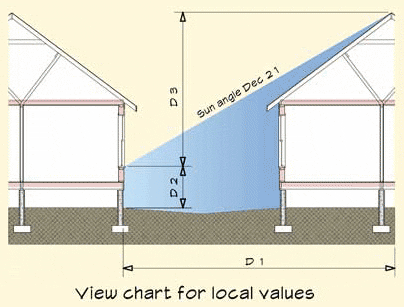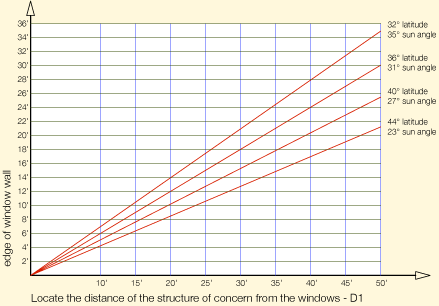Site Considerations
Does a site receives enough south-facing sun during the day? This is the most important consideration in choosing a plan from the Solar Series of house plans. If it does not, then you could be building a home that costs more to heat because of the large expanse of windows that end up wicking heat out of the home. There is a balance between how much sun the south-facing windows receive and the amount of heat loss during the rest of the 24 hour cycle. During the winter months, approximately 90% of the usable sun’s energy occurs between 9:00 a.m. and 3:00 p.m. (sun time), so it is important that the sun is not blocked by tall buildings or large trees. Deciduous trees can actually work well since they drop their leaves in the winter, and provide summer shading. A mature deciduous tree can still block approximately 40% of the available sun energy, but those trees can be trimmed and thinned to maximize the winter penetration and the summer shading without butchering the trees (if you own them). However, that can become a necessary upkeep every three years or so. They may not need trimming at all, it depends on the density of branching and light making it through. This is not an exact science no matter what you might read. The following illustrations can help evaluate potential shading issues.

- Locate your latitude to the right
- Locate the distance of the structure of concern from the windows – D1
- Find value for D3 where D1 intersects you latitude
- Add D3 to D2 (distance of the window sill from the grade)
- This is the lowest height that the sun will be on December 21 at noon

